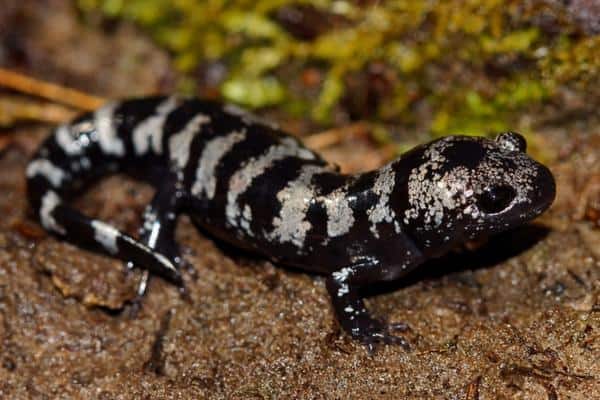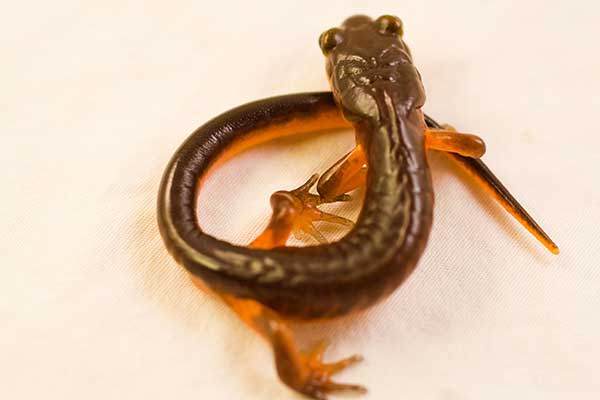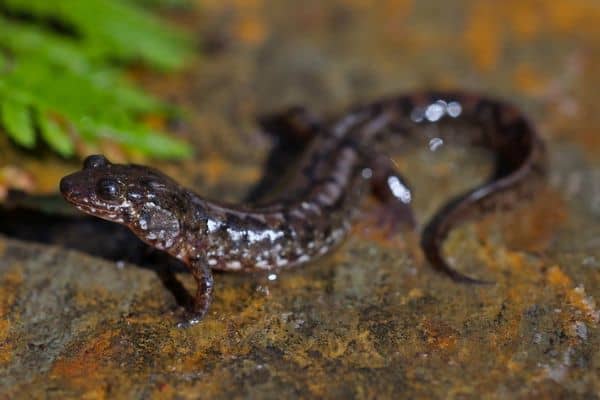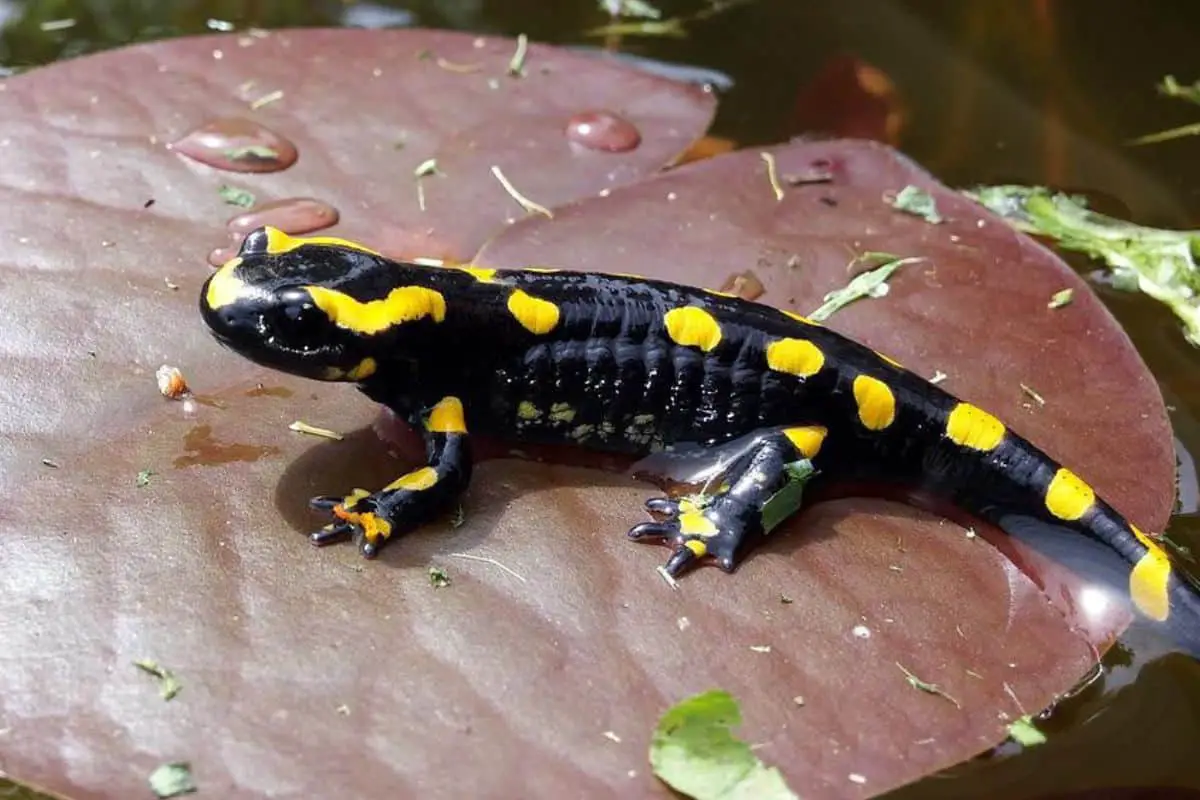Salamanders are a diverse group of amphibians found on all continents except Antarctica. They come in a variety of sizes and colors, and some species can grow to be quite large. It’s no surprise that they’re regarded as one of the most captivating and beautiful creatures on the planet.
People have been fascinated by them since ancient times, when they were thought to be supernatural beings. While salamanders have many myths, we now know that they are real animals that can live in our homes and even be kept as pets!
By this point, you may be wondering, “Can you keep a wild salamander as a pet?” Don’t worry! This article will answer all of your questions!
Can you keep a wild salamander as a pet?

You may be able to keep a wild salamander as a pet, depending on where you live and the local laws there. However, even if you are legally allowed to, it’s never a good idea to remove a wild animal from its natural habitat.
There are also specific salamander species that are legally protected, making it illegal to catch and keep as a pet because they are either endangered or necessary to balance and maintain the health of an environment.
Are wild salamanders protected?

Salamanders are protected by law in the US. Wild salamanders are an essential part of the ecosystem, despite being less well-known than their cousins, the fireflies and crickets.
There are several factors to consider when it comes to conservation efforts for wild salamanders. For starters, many of these creatures live in remote areas, making it difficult to monitor or protect them from threats such as habitat loss and pollution.
Second, because many salamander species have very small ranges, they may become extinct if their habitat is destroyed or they are poached out of existence. The good news is that organizations worldwide are working to protect salamanders and other endangered amphibians.
So, before considering keeping or catching a wild salamander, make sure to check whether it is legal in your state. And if so, know which species are legal for you to keep in order to stay within the law.
US states with laws governing the possession of wild salamanders

Wild salamanders have grown in popularity as pets in recent years; however, some states prohibit certain species from being kept as pets. In order to avoid breaking the law, check to see if the salamander you intend to keep from the wild is legal in your state.
Here are some of the states that provided information regarding keeping wild salamanders as pets:
1. Louisiana
A permit is required to keep the following salamanders as pets that have been taken from the wild:
- Tiger salamanders
- Red-backed salamanders
- Webster’s salamanders
- Mud salamanders
- Red salamanders
2. Michigan
The following salamanders caught in the wild are prohibited:
- Northern dusky salamanders
- Northern two-lined salamanders
- Marbled salamanders
- Small-mouth salamanders
Other native salamander species in Michigan can be kept as pets, but you can keep only a maximum of ten.
3. New Jersey
Dusky salamanders can be kept as pets even without a permit.
4. Minnesota
Wild salamanders cannot be kept as pets under any circumstances.
5. New Hampshire
Permits are required to keep these salamanders:
- Spotted salamanders
- Northern two-lined salamanders
- Northern dusk salamanders
- Eastern red-backed salamanders
6. Oregon
To keep these wild salamanders, you must have a valid Wildlife Holding Permit, and you can only keep three per household. These salamanders are:
- Northwestern salamanders
- Long-toed salamanders
- Pacific giant salamanders
- Western red-backed salamanders
- Tiger salamanders
- Giant salamanders
- American giant salamanders
- Asian salamanders
- Shovel-nosed salamanders
- European Mountain or Brook salamander
- Caucasus or spine-tailed salamanders
- Fire salamanders
The only salamander species that can be kept as pets without a permit are:
- Axolotl
- Gold-striped salamanders
- Spectacled salamanders
7. Rhode Island
It is strictly forbidden to keep these particular salamander species as pets, including:
- Eastern red-backed salamanders
- Four-toed salamanders
- Marbled salamanders
- Northern dusky salamanders
- Northern spring salamanders
- Northern two-lined salamanders
- Spotted salamanders
8. Arkansas
The Ouachita streambed salamander cannot be captured in the wild and kept as a pet.
9. Massachusetts
These salamanders are illegal to keep as pets in this state:
- Four-toed Salamander
- Spotted Salamander
- Spring Salamander
These are the salamanders that you can take from the wild and keep as pets, but you can only have two of each:
- Eastern Red-backed Salamander
- Northern Dusky Salamander
- Northern Two-lined Salamander
10. Maryland
It is illegal to keep these numerous salamander species as pets, including:
- Eastern tiger salamanders
- Green salamanders
- Jefferson salamanders
- Wehrle’s salamanders
You may have up to four of each of the following native salamanders:
- Spotted salamanders
- Marbled salamanders
- Northern dusky salamanders
- Seal salamander
- Mountain dusky salamanders
- Northern two-lined salamanders
- Long-tailed salamanders
- Northern spring salamanders
- Four-toed salamanders
- Eastern red-backed salamanders
- Northern slimy salamanders
- Valley and ridge salamanders
- Northern Red salamander
11. Vermont
To keep these wild salamanders, permits are necessary:
- Mole salamanders
- Hellbenders
- American giant salamanders
- Northern dusky salamanders
Things you need to know before keeping a wild salamander as a pet

Salamanders make excellent pets, but they are not the most popular. They require a lot of space and care, so make sure you understand what you’re getting into before you commit.
- Salamanders are cold-blooded animals, so they must be kept at room temperature. Do not expose your salamander to high temperatures or leave it outside on hot days!
- These creatures are amphibians, meaning they can live on land and in water. Make sure your salamander’s habitat includes a shallow water source (such as a small tank) where it can swim if desired.
- Salamanders are carnivorous, which means they eat meat. If you want to feed your salamander worms or crickets (the most common foods for wild salamanders), make sure you get them from a reputable supplier to avoid parasites or diseases that could harm your pet!
Wild salamanders as pets

To summarize, wild salamanders can be kept as pets. However, you must ensure that you are in compliance with all applicable laws and regulations. It is also important to make sure that you are taking good care of them in order to provide them with a happy and healthy life.




